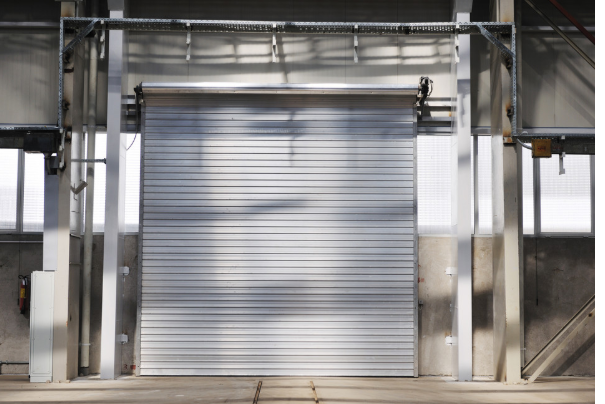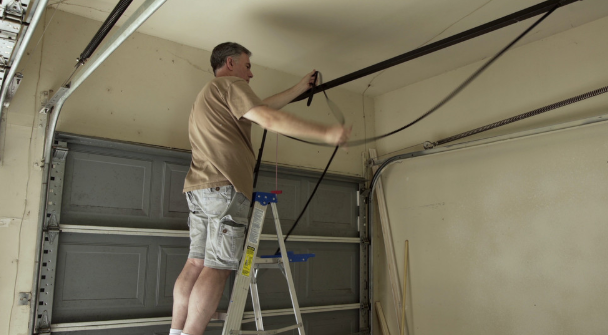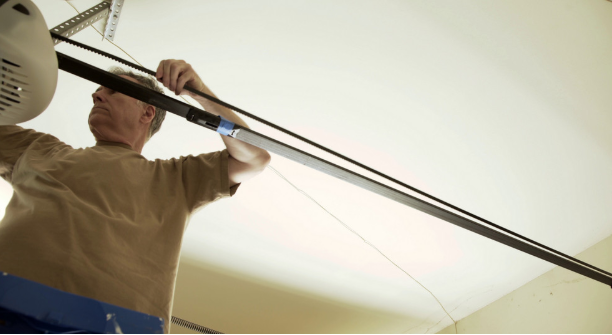Highlights
When choosing a new garage door, homeowners must evaluate several interconnected factors to strike the right balance among aesthetics, performance, safety, and value. Key considerations include:
Materials & durability – Steel and composite offer resilience and minimal upkeep; wood delivers custom charm with greater maintenance.
Insulation & efficiency – Selecting doors with the correct R‑value boosts energy savings, particularly for climate‑controlled garages.
Opener technology & security – Battery backup mandates (e.g. California SB‑969), belt drive mechanisms, and smart controls enhance both convenience and safety.
Total cost of ownership – Beyond the sticker price, factor in service contracts, spring replacement cycles, and potential warranty benefits from reputable installers.
These elements work in concert. For example, a modern insulated steel sectional door paired with a belt‑drive opener may cost more initially but offer quieter, more secure operation and lower energy bills throughout its life.
1. Materials & Durability
One of the most important decisions is the door material, which influences aesthetics, maintenance, and longevity. According to Clopay’s buying guide, steel doors are durable and low-maintenance, especially with wood‑look finishes that mimic natural beauty. Natural wood offers unmatched curb appeal in species like redwood or cedar but requires regular staining or sealant to prevent warping and decay.
For a contemporary feel, aluminum and glass combinations provide sleek modern lines and light transmission, though they may compromise insulation and privacy. Composite or vinyl doors offer a middle ground: maintenance-free, dent-resistant alternatives with moderate insulation. Your choice hinges on your tolerance for upkeep, design preference, and neighborhood style. A rural craftsman home may suit real wood, while modern urban environments benefit from sleek aluminum or composite. Weighing these variables ensures your selection matches both function and form.
2. Size, Headroom & Installation Constraints
Accurate measurements are essential before choosing your door. Most single‑car doors are 8–9 ft wide and 7–8 ft tall; double doors usually run 16 ft wide. Headroom—the space between the top of the frame and ceiling—must be at least 10–12 in to accommodate torsion or extension springs, plus extra for openers. Limited clearance can restrict your options or necessitate high‑lift or vertical‑lift tracks.
Mounting type also matters. Sectional doors require ceiling tracks, while rolling steel doors mount on the wall, suitable for narrow garages. These factors may eliminate certain choices entirely—consider pre‑installation site evaluation from a reputable garage door provider who can scope feasibility.
3. Insulation, Energy Efficiency & Climate
Insulation matters, especially for attached or climate‑controlled garages. Doors with higher R‑values help maintain a stable interior environment, reducing heating/cooling costs and noise transfer. For uninsulated spaces or mild climates, a lower R‑value (≈3) may suffice, but if the garage doubles as a workshop, or if it supports rooms above, aim for R‑14 to R‑16.
Insulation isn’t only about energy. It also adds structural rigidity, making heavier steel doors more resistant to wind and impact. Homeowners in northern states might prioritize these benefits, while those in warmer zones may focus on ventilation or using glass panels for natural light. Keep your local climate and garage use in mind when comparing models.
4. Style, Design & Curb Appeal
Your garage door is a major architectural statement. Popular color palettes range from classic whites and neutrals to bold blacks and wood stains. Clopay outlines styles like raised‑panel, carriage‑house, and full‑view glass doors. The Spruce notes design options as “classic, modern, and carriage‑house,” aligning choice with home aesthetics.
Choose a style that complements your home’s facade—traditional homes may favor carriage‑house designs, while contemporary builds may benefit from minimalist glass and aluminum. Accent features like window inserts or decorative hardware can enhance appeal. Just ensure that privacy and maintenance are not compromised, particularly for glass options.
5. Opener Technology, Smart Features & Regulations
The garage door opener is as vital as the door itself. Options include chain-drive, belt-drive (quieter), and screw-drive systems. Belt‑drive openers are ideal for attached homes due to reduced vibration and noise. Integration of smart features—such as smartphone control, remote access monitoring, and scheduling—enhances convenience. According to Fortune Business Insights, the global garage and overhead doors market is projected to grow from USD 6.99 billion in 2022 to USD 9.94 billion by 2029, with North America accounting for approximately 58% of the market share.
Some jurisdictions, like California, mandate battery backup systems on automatic openers, required by SB‑969, which took effect July 1, 2019, to ensure operation during power outages. If safety—a top priority for families—is in play, consider auto‑reverse sensors, motion detection, and timer‑to‑close mechanisms. Pairing opener and door manufacturer can also conserve warranty coverage and ensure compatibility.
6. Security & Safety Features
A garage door is often the largest entry point into a home—security should not be overlooked. Smart openers with rolling-code encryption resist hacking. Consider multi‑point locking systems or deadbolts, especially on manual or hinged doors. Privacy‑glass or window-only‑top‑panel designs prevent potential intruders from peeking inside. Installing motion-activated lighting near the garage can also deter unauthorized access and improve nighttime visibility.
For safety, photo-eye sensors are now required by standard code to prevent entrapment, and well-calibrated auto-reverse mechanisms are essential. If small children or pets are present, choose doors with pinch-resistant panels and quiet operation. Additionally, routine safety inspections should be part of your maintenance plan to ensure all features remain functional.
7. Maintenance Needs & Warranty Coverage
Maintenance varies by material and mechanism. Steel and composite doors require minimal care—occasional cleaning and spring lubrication. Wood doors demand annual sealing or paint to prevent weather damage. Dodds Garage Doors recommends investing in durable torsion springs and nylon rollers paired with polyurethane insulation for quiet, low-maintenance operation.
Automatic door springs are rated around 10,000 cycles—about five years of average usage—so premium springs with higher cycle ratings are worthwhile. Ask installers about preventive maintenance plans and warranty coverage for both doors and openers. Brands that offer comprehensive packages generally signal confidence in product durability and service reliability.
8. Cost vs Value: Upfront and Over Time
Initial door cost can range from $725 to $2,100, with premium materials, insulated options, and smart openers pushing toward $4,500 or more. Budget steel up‑and‑over doors start under $500–600, while aluminum roll‑ups run $1,500+, and high-end sectional door installations can exceed $2,000–10,000. Prices can also vary based on regional labor rates, custom design requests, and added safety features.
But don’t base decisions on MSRP alone. Include costs of energy savings, reduced maintenance, potential insurance discounts, and increased home value. A well-chosen insulated door and quiet belt-drive system may pay for itself over time. Equally important is installer reputation—cheap, unknown providers may lead to recurring repairs. Financing options or bundled service packages can make higher-tier doors more accessible.
Choosing a new garage door involves more than picking a style. By carefully evaluating materials, size constraints, insulation needs, design alignment, opener technology, security features, maintenance requirements, and overall cost, homeowners can confidently select a door that enhances both form and function. Integrating high-quality springs, quiet belt-drive openers, and smart features ensures that your investment continues to pay dividends over time. Additionally, working with a reputable installer can help prevent costly repairs, ensure code compliance, and provide peace of mind with solid warranties. A well-chosen garage door not only boosts security and efficiency but also significantly enhances curb appeal and resale value.











